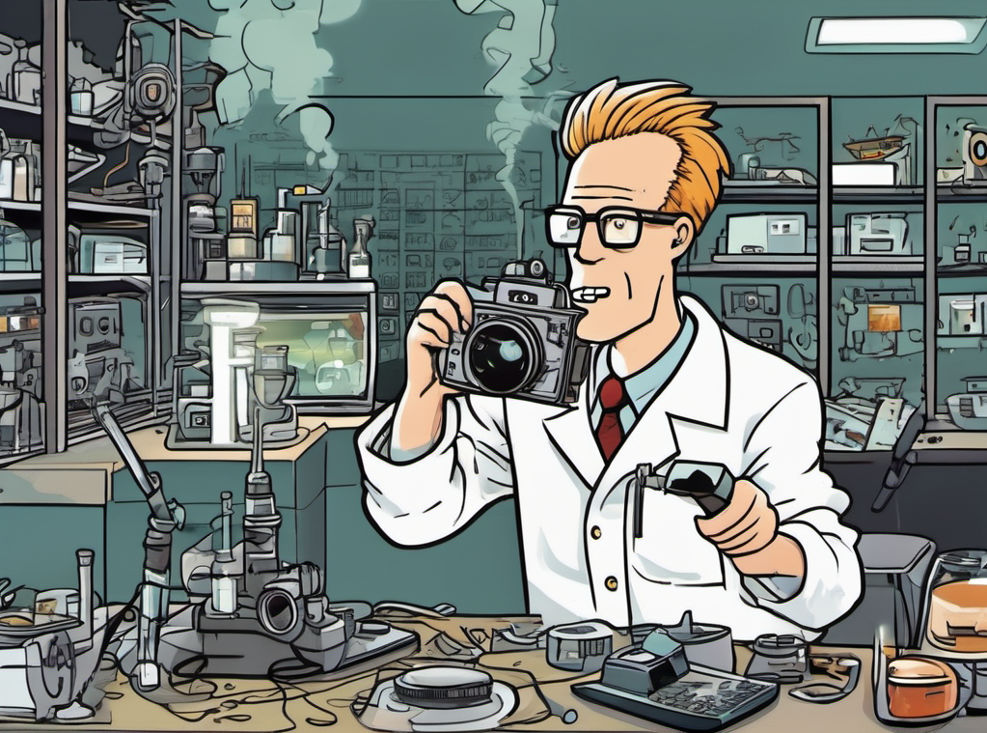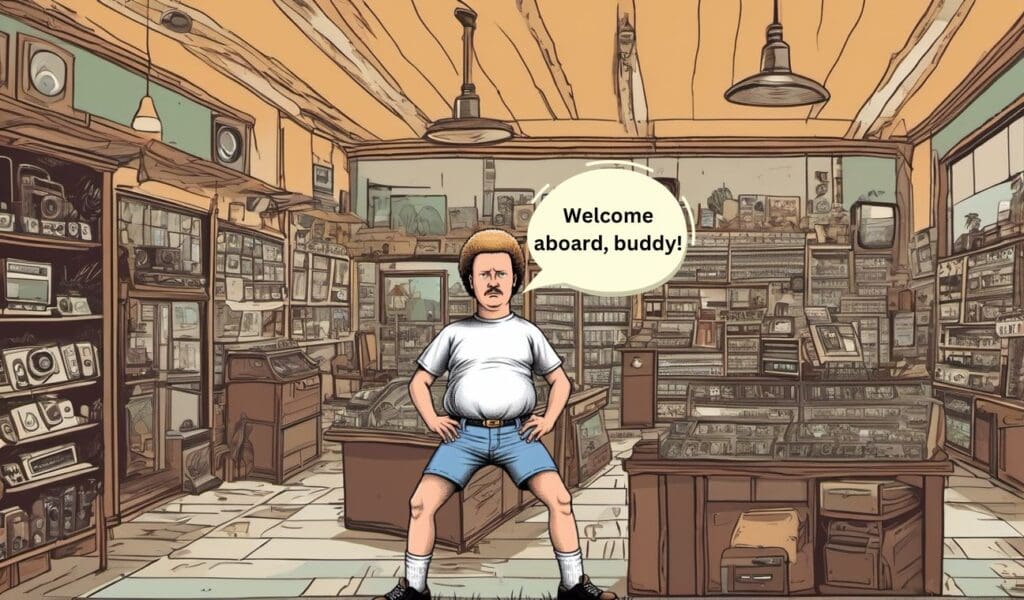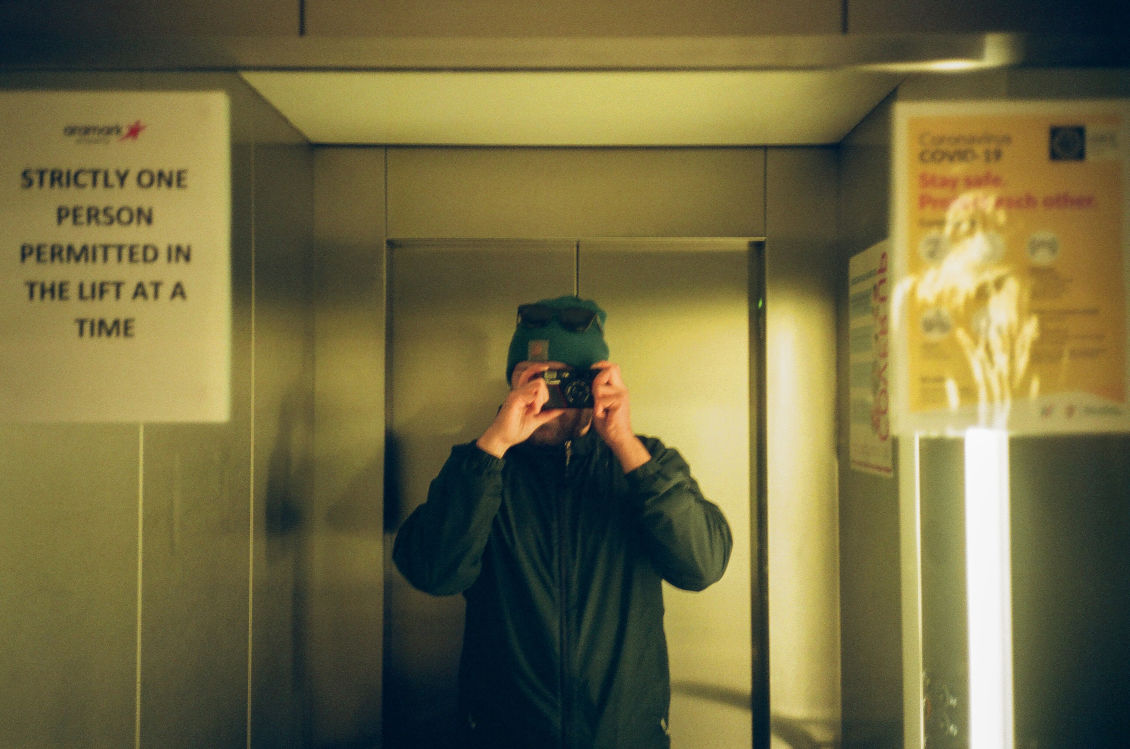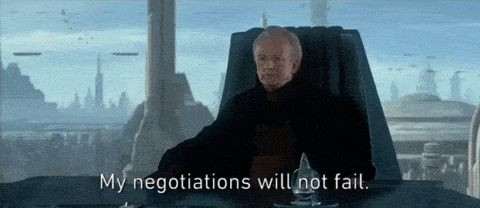Ever wanted to take awesome pictures like the old days, with film instead of just your phone? Well, ditch the digital stuff and dive headfirst into the realm of the thrift store film camera! But wait, there can be some stinkers hidden amongst the dusty shelves. This five-minute guide will show you how to easily identify a great film camera at the thrift store.
Affiliate Disclosure: As an Amazon Associate I earn from qualifying purchases. Purchasing via provided links/banners comes at no additional cost to you. Analog Dayz only recommends products and/or services that are insightful and helpful to readers. For more info please read our Affiliate Disclaimer.

Step 1: Inspect the Funky Fresh Body
First things first, grab that camera and eyeball it like a hawk. Look for any major cracks, dents, or signs of water damage. A camera that looks like it has been beaten up is probably best left for the bargain bin.
Funky Smell Test: This might sound outta left field, but give the camera a good sniff. If it reeks like a moldy basement, it’s a red flag. Avoid that funk unless you wanna develop some funky photos (and not the cool kind).
Open the camera: Pop open the back. Light seals, those black foamy things, should be soft and pliable, not dry and crumbly. While you’re in there, check for any rust or corrosion.
Battery Compartment: Find the battery compartment and peek inside. Corrosion ain’t cool. If it’s there, the camera might be fried. While you’re at it, see what type of battery the beast needs. Bringing a couple of common film camera batteries (AA, AAA, etc.) to the store can be a lifesaver to test if the camera even sparks to life.
Lenses: Look for any scratches, haze, or fungus. Minor imperfections might be okay, but anything major will mess up your photos.
Shutter Speed Shuffle: This gets a little tricky. While the camera’s off, look through the lens and flick the shutter speed dial. The aperture blades (the thingy that opens and closes) should move smoothly. You can also try (carefully!) opening the back and holding the shutter release button while looking through the back. There should be a brief flash of light as the shutter opens and closes.
Bonus Tip: The Power of the Packaged Deal Sometimes, with a little luck, you might score a camera with the original box and manual. This is a good sign, as it suggests the camera was likely stored properly.

Step 2: Do Your Research!!
Once you’ve identified a seemingly righteous camera, it’s time to hit the web. Search for the camera’s model number and see what pops up. Reviews, user forums, and even some YouTube tutorials can be goldmines of information. You’ll learn about common problems, what the camera’s worth, and if it’s known for being a reliable shooter.
Pro Tip: Haggling 101 Thrift stores often price their film cameras based on a guesstimate, not necessarily their actual value. Do your research beforehand and be prepared to offer a lower price, especially if the camera shows signs of wear or needs new parts.

Step 3: Mastering the Thrift Store Haggle
Thrift stores often price their film cameras based on a general estimate, not necessarily their true market value. This presents a golden opportunity to snag a fantastic deal! Here’s how to become a negotiation ninja:
- Do your research: As mentioned earlier, knowledge is power. Knowing the camera’s average market price equips you to negotiate from a position of strength.
- Assess the camera’s condition: Consider any visible signs of wear and tear, missing parts, or malfunctioning features. These factors can justify a lower asking price.
- Be polite and friendly: A courteous demeanor goes a long way. Explain your interest in the camera and highlight any factors that might warrant a price adjustment.
- Start with a reasonable offer: Don’t lowball the seller. Begin with a price slightly lower than your research suggests is fair, leaving room for negotiation.
- Be prepared to walk away: If the seller isn’t receptive to your offer, don’t be afraid to politely thank them and move on. There might be another gem waiting for you around the corner.
Bonus Tip: Thrift store employees often have the authority to adjust the prices of film cameras, especially if an item has been sitting on the shelf for a while. Striking up a friendly conversation and expressing genuine interest in the camera can increase your chances of securing a favorable price.
Step 4: Welcome to the Analog Club
Congratulations! You’ve successfully navigated the thrift store maze and emerged victorious with a cool film camera. Now comes the exciting part: embarking on your journey into the world of analog photography.
- Grab some film: Head to a local camera store or online retailer to purchase film. Different film types offer unique results, so explore your options and choose one that suits your desired aesthetic.
- Invest in development: Develop your film at a reputable photo lab or consider learning how to develop your film at home (although this requires additional equipment and knowledge).
- Practice makes perfect: Don’t be afraid to experiment! The beauty of film photography lies in the learning process. Take your camera out, shoot some pictures, and have fun.
- Join the community: There’s a vibrant online and offline community of film photography enthusiasts. Connect with other photographers, share your work, and learn from their experiences.
Remember, finding the perfect film camera at a thrift store is just the beginning. Embrace the unique charm of analog photography, experiment, and enjoy the process of capturing timeless memories on film.

Pros and Cons of Thrifting Film Cameras
Thrifting film cameras offer hidden gems and savings but also come with drawbacks. Here are some top Pros and Cons of thrifting film cameras:
Pros:
- Budget-friendly: Thrift stores offer film cameras at a fraction of the price compared to buying new. This makes it an accessible option for photographers or those on a tight budget.
- Unique Finds: You never know what treasures you might discover. Thrift stores offer a chance to find one-of-a-kind equipment.
- Sustainable Choice: By giving pre-loved cameras a second life, you contribute to a more sustainable lifestyle and reduce the environmental impact associated with manufacturing new cameras.
Cons:
- Uncertain Condition: Unlike buying new, there’s no guarantee of the camera’s functionality or internal condition. You might end up with a camera requiring repairs or even unusable altogether.
- Time Investment: Sifting through a vast selection of cameras at thrift stores can be time-consuming. Be prepared to dedicate some effort to finding the right model.
- Limited Knowledge Required: A basic understanding of film cameras is crucial for making informed decisions. Without some knowledge, it’s difficult to assess the camera’s condition, potential value, or suitability for your needs.
Mitigating the Cons:
- Research is the key: Familiarize yourself with common film camera brands, their typical price points, and known issues. Online resources and camera communities can be valuable sources of information.
- Inspect thoroughly: Carefully examine the camera’s body, lens, and functionality. Look for signs of damage, missing parts, or malfunctioning features.
- Seek guidance: If you’re unsure about a particular camera, consult with a knowledgeable friend, online forums, or a camera store employee for their insights.
By understanding both the advantages and limitations of thrifting film cameras, you can approach your search with informed decision-making and increase your chances of scoring a fantastic deal on a camera.
Essential Gear to Fuel Your Thrifting Film Camera Adventure
While the thrill of the hunt focuses on the camera itself, venturing into film photography requires some additional equipment to bring your creative vision to life.
Before you head out to thrift your first film camera, here’s a list of essential things to consider, along with some helpful film supplies to get you started:
- Batteries: Film cameras often require specific batteries to function:
- Film: The heart and soul of analog photography. Explore various film types (35mm, medium format, etc.) to find one that suits your desired aesthetic:
- Camera Strap: Keep your camera secure and comfortable while you shoot:
- Camera Bag: Protect your investment with a stylish and functional camera bag:
- Light Meter (Optional): A light meter helps ensure proper exposure, especially in challenging lighting conditions:
While this blog post provides recommendations for film camera gear, it’s crucial to acknowledge that these suggestions are based on my personal experience and research.
Therefore, it’s highly recommended that you conduct your own research to ensure the equipment aligns perfectly with your individual needs and budget.

Conclusion
Thrifting for film cameras is a gamble, but with a keen eye and a little research, you can land a sweet deal and embark on a rad journey into the world of analog photography. Remember, don’t be afraid to walk away if something feels off. There’s always another treasure waiting to be unearthed at the thrift store. Now get out there and shred some film, braa!
Until next time, folks! Pssst, take a quick peek at my latest post.
P.S. Got any sneaky tips or tricks up your sleeve? Drop ’em in the comments below! Let’s keep the conversation rolling.



